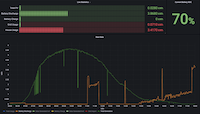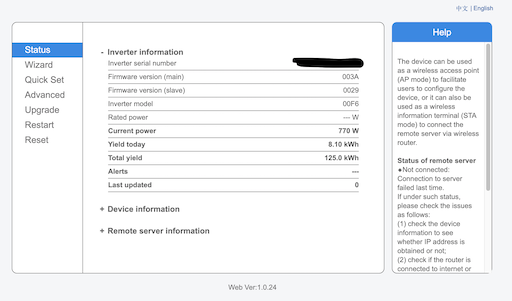Controlling Solis Inverters With Home Assistant
Our general setting for the house prioritises energy use as follows :
Solar » Battery » Grid
This means we minimise our usage of the grid when possible.
Given the cheap rate period of energy usage through the night, we had manually set the inverter to charge the battery from the grid during the core hours 23:30 - 05:30. This effectively stops the battery from being used to power the house in that period and we have no solar in that period bar the peak summer months.



